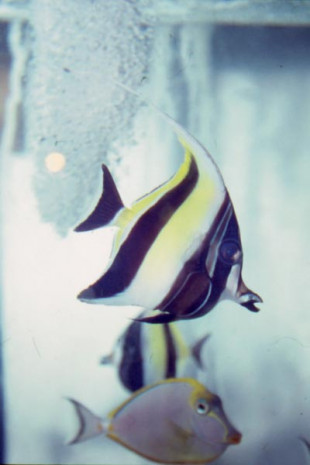Some weeks have now elapsed (as I write these lines) since the horrific tsunami catastrophe that hit South East Asia on 26 December 2004. Even now, as we continue to attempt to come to terms with the enormity of the disaster and its devastating toll of human lives, it is extremely difficult to obtain any detailed news regarding its effects on the ornamental aquatic industries of the countries that were most affected by the tidal waves. Obtaining reports from Indonesia in particular – the worst-hit country with a death toll of well over 100,000 – is proving exceptionally difficult, with most e-mails remaining unanswered. In general terms, though, it appears that exporters based in the island of Java around the Jakarta and Surabaya regions are relatively unaffected, especially those who deal exclusively or predominantly in freshwater species. At least some marine exporters who receive stocks from the Sumatra region, however, have been badly affected, while other Sumatran suppliers (probably those along the south-western and eastern coasts of the island) are still able to operate effectively. It will be some time before a fuller picture emerges from this region. Supplies of marine fish from Sri Lanka and other tsunami-hit regions (these fish were photographed at an exporter’s premises in Colombo) will be affected for some time to come. In Sri Lanka, the second-worst-hit country with a death toll rising towards 30,000, the freshwater industry sector is pretty much unaffected. However, the marine sector, especially along the southern and eastern coasts, has suffered badly. One of Sri Lanka’s leading exporters, Vibhu Perera of Lumbini Aquaria Wayamba Ltd., has been working ceaselessly since the disaster trying to assess the overall damage. In the course of his early enquiries, he visited no fewer than 18 suppliers of ornamental marine fish in the worst affected areas. Altogether, these suppliers employ around 300 divers. Yet despite this large number, loss of life has – almost inexplicably – been low, with the death of five people (three adults and two children) confirmed. Loss of property and equipment has been extensive, with buildings (homes, holding and packing huts, etc.), boats, boat engines, diving cylinders, aquaria, compressors and a whole host of other collecting/holding-associated equipment washed away or damaged beyond recovery. The news from India is very sparse. All that I’ve been able to gather at the moment is that fishermen and their families…



